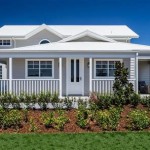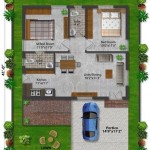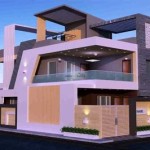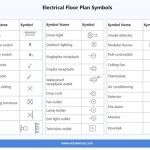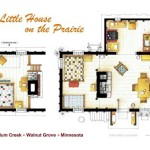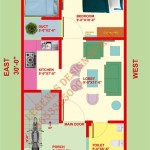```html
Walk-Up Home Plans: Accessibility and Design Considerations
Walk-up home plans, defined as multi-story residential designs without elevator access, present unique considerations for both architectural design and long-term accessibility. They are often chosen for their cost-effectiveness, efficient use of land, and distinct architectural appeal, particularly in urban and suburban environments. Understanding the nuances of walk-up designs is crucial for architects, developers, and prospective homeowners alike, as it involves careful planning for circulation, usability, and potential future adaptations.
The inherent verticality of walk-up homes necessitates a strategic approach to interior layout. Unlike single-story or elevator-equipped buildings, the placement of living spaces, bedrooms, and service areas needs to consider the physical demands placed on residents, especially as they age or experience mobility limitations. Furthermore, the exterior design must incorporate aesthetically pleasing and functional staircases, landings, and entryways that complement the overall architectural style.
This article will explore the key factors involved in walk-up home plans, addressing accessibility concerns, design optimization, and the trade-offs between cost, space, and user experience. By examining these elements, a clearer picture of the benefits and challenges associated with walk-up designs will emerge, enabling informed decision-making for all stakeholders.
Accessibility and Universal Design Principles
The most significant challenge in walk-up home plans is accessibility for individuals with mobility impairments, families with young children, and the elderly. While complete accessibility might be difficult to achieve without an elevator, incorporating universal design principles can significantly improve usability for a wider range of residents. Universal design focuses on creating spaces that are usable by all people, to the greatest extent possible, without the need for adaptation or specialized design.
One primary consideration is the design of the staircases. While building codes specify minimum and maximum riser heights and tread depths, exceeding these minimums can greatly enhance comfort and safety. Wider treads provide more surface area and reduce the risk of tripping, while shallower risers require less effort to ascend. Handrails are crucial, and should be installed on both sides of the staircase, extending beyond the first and last steps. The handrails should be graspable and ergonomically designed for people of all hand sizes.
Beyond the staircase itself, the landings between floors are equally important. These rest areas provide a place to pause and regain strength, particularly for individuals who may struggle with continuous climbing. Landings should be adequately sized to accommodate mobility devices, such as walkers or wheelchairs, even if the building is not fully wheelchair accessible. The surfaces of both the stair treads and landings should be slip-resistant to prevent falls, especially in wet or icy conditions.
In addition to the physical aspects of the staircase, the placement of essential living spaces also plays a crucial role in accessibility. Locating the main living area, kitchen, and at least one bedroom and bathroom on the lowest level minimizes the need to navigate stairs for everyday activities. This is particularly important for older adults who may experience joint pain or fatigue. If feasible, consider incorporating features such as wider doorways and roll-in showers to enhance accessibility for individuals using wheelchairs or other mobility aids.
Beyond the internal aspects of the walk-up, exterior accessibility must also be considered. Ramps can be incorporated into the entryway to provide a sloped access route, although this may require significant space and grading adjustments. Alternatively, a platform lift can be installed to bridge the height difference between the ground level and the entrance. Clear pathways and adequate lighting are essential for ensuring safe and easy access to the building for all residents, regardless of their mobility level.
Optimizing Space and Layout in Walk-Up Designs
Walk-up home plans often prioritize efficient use of space, especially in urban settings where land is at a premium. The vertical nature of these designs allows for a greater density of living units, but it also requires careful planning to maximize functionality and minimize wasted space. The staircase itself consumes a significant amount of square footage and must be integrated into the overall layout in a way that minimizes its impact on usable living areas.
One strategy for optimizing space is to incorporate the staircase into the design as a central feature. This can be achieved by using open staircases with minimal support structures, or by integrating storage solutions into the staircase itself. For example, the space beneath the stairs can be utilized for closets, shelving, or even a small home office. This repurposing of otherwise dead space can significantly enhance the functionality of a walk-up home.
Another key consideration is the layout of individual living units. Open floor plans are often preferred in walk-up designs, as they create a sense of spaciousness and allow for better natural light penetration. However, open floor plans can also be challenging in terms of noise control and privacy. Careful consideration should be given to the placement of bedrooms and bathrooms, ensuring that they are adequately insulated and separated from communal living areas.
The use of vertical space is also crucial in maximizing the functionality of a walk-up home. Tall ceilings can create a more airy and spacious feel, and they also allow for the incorporation of loft spaces or mezzanines. These elevated platforms can be used for bedrooms, home offices, or storage, effectively increasing the usable square footage of the home. Built-in storage solutions, such as shelving units and cabinets, can also help to minimize clutter and maximize space utilization.
Furthermore, the design of windows and natural light can significantly impact the perceived size and comfort of a walk-up home. Large windows and skylights can bring in ample natural light, making the space feel brighter and more inviting. The strategic placement of windows can also help to create cross-ventilation, improving air quality and reducing the need for air conditioning. Consider the orientation of the building and the placement of windows to optimize sunlight exposure and minimize glare.
Cost Considerations and Long-Term Value
One of the primary advantages of walk-up home plans is their relative cost-effectiveness compared to elevator-equipped buildings. The absence of elevators significantly reduces construction costs, maintenance expenses, and energy consumption. However, the lack of elevator access can also impact the long-term value and marketability of the property, particularly as the population ages.
While initial construction costs may be lower for walk-up buildings, it is important to consider the long-term maintenance costs associated with staircases and other building components. Regular cleaning and maintenance are essential to ensure the safety and longevity of the staircases. The exterior of the building may also require more frequent cleaning and painting due to exposure to the elements. These ongoing expenses should be factored into the overall cost of ownership.
The long-term value of a walk-up home is influenced by several factors, including its location, architectural design, and the overall condition of the building. Properties located in desirable neighborhoods with convenient access to amenities tend to command higher prices, regardless of their accessibility features. A well-designed and well-maintained walk-up home can retain its value over time, particularly if it is located in an area with strong demand for housing.
However, it is also important to consider the potential impact of aging in place on the value of a walk-up home. As the population ages, the demand for accessible housing is likely to increase. Walk-up homes may become less desirable to older adults who have difficulty navigating stairs, which could potentially impact their resale value. To mitigate this risk, consider incorporating features that enhance accessibility, such as wider doorways, grab bars in bathrooms, and the potential for future elevator installation.
Ultimately, the decision to invest in a walk-up home involves a trade-off between cost, space, and accessibility. While walk-up designs may not be suitable for everyone, they can be a viable option for individuals and families who are looking for affordable housing in urban areas. By carefully considering the design principles and accessibility concerns outlined in this article, architects, developers, and homeowners can create walk-up homes that are both functional and aesthetically pleasing.
```
6 Benefits Of A Walk Up House Lot

House Plan Information For Bella Walkup Entry Houseplans

Floor Plan Friday Living At The Front Building House Plans Designs Architectural

2 Story Modern House Plans Houseplans Blog Com

Minimalist Floor Plans With Porches Houseplans Blog Com
10 Small House Plans With Open Floor Blog Homeplans Com

10 Small House Plans With Open Floor Blog Homeplans Com

Cottage House Plan With 3 Bedrooms And 2 5 Baths 3800

One Bedroom Walk Up Apartment Interior Design Ideas

House Lakeview Plan Green Builder Plans

